How is a dumbbell incline bench beneficial to creating a well-rounded chest?
The dumbbell incline bench press is a fantastic movement for chest growth. Using dumbbells is beneficial because it forces both sides of your body to work independently to move the weight. As a result, your chest, triceps, and shoulders develop more evenly, and you reduce the risk of side-to-side muscle or strength imbalances.
The incline press is valuable inside any chest program because it emphasizes the upper portion. Incline pressing regularly is important because the area can be resistant to growth and many trainees struggle to develop it well. Most people have a well-developed chest, but the upper portion often seems undeveloped in comparison.
Using dumbbells for the incline press is also beneficial because it provides you more freedom for the range of motion. Instead of adjusting your body to a specific piece of equipment (e.g., a barbell) or machine (e.g., a Smith machine), you’re free to move the weight through a comfortable range of motion.
How to do a Incline Bench Press with Dumbbells
- Set the incline of a bench at around 45 degrees, grab a pair of dumbbells, and sit down.
- With a dumbbell in each hand and resting atop your thighs, slowly lie back on the bench as you simultaneously kick both dumbbells up above your torso. Your feet, butt, upper back, and head should be in contact with the bench.
- Bring both dumbbells to your sides, plant your feet firmly, bring your shoulders back, and chest out. Your lower back should be slightly arched here, and your elbows should be to your sides but not flared out.
- From this position, take a breath and push both dumbbells up toward the ceiling and in until they touch lightly.
- Exhale and bring them back to your sides.
- Keep repeating.
What muscles does the dumbbell incline bench press activate?
As a pushing exercise, the incline bench press trains your pectorals. Thanks to the incline, you emphasize the upper portion, also called the clavicular head (1, 2). The movement is beneficial because it works the often-ignored upper chest area, which doesn’t activate much during traditional chest movements, such as push-ups or flat bench presses.
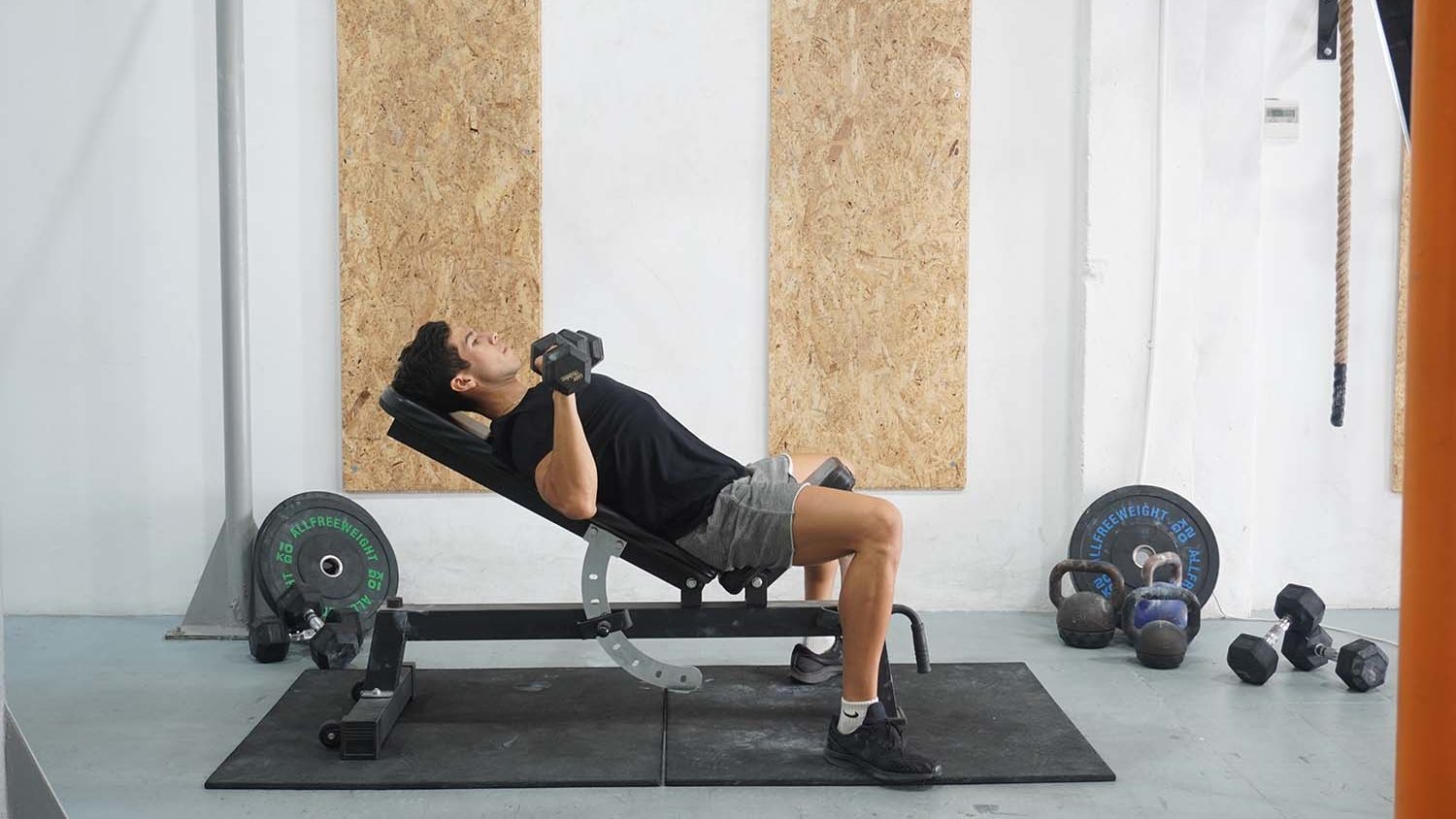
The dumbbell incline press also involves the anterior shoulder head, which works with our pectorals to extend our arms on pushing exercises (2). Incline pressing also trains our triceps, which extend our elbows and straighten our arms (1). The tricep plays an important role in incline pressing, especially as the weights move higher. Weak triceps are often the reason why you might fail to lockout a repetition on the bench press.
Our core musculature is also involved during a dumbbell incline bench press. Thanks to the instability of pressing individual weights, our rectus abdominis and obliques work extra hard to keep us stable and in position.
Dumbbell Incline Bench Press vs. Barbell Incline Bench Press
At first glance, incline pressing with dumbbells or a barbell might seem like the same thing. But some nuances make the two exercises unique.
First, incline pressing with a barbell allows you to use more weight, producing higher levels of mechanical tension in our chest, shoulders, and triceps. You might be able to incline barbell press 185 pounds, but this doesn’t mean you can also press two 90-pound dumbbells.
Second, using dumbbells allows for a slightly longer range of motion. As you lower dumbbells to your chest, you’re not limited as much. In contrast, the barbell gets in contact with your chest, preventing you from lowering it any further. Using dumbbells allows greater freedom of movement, which can be beneficial for muscle activation and injury prevention. In contrast, a barbell locks you into position and narrows the path in which you can move the weight.
Dumbbell incline pressing is also beneficial for diagnosing, fixing, and preventing side-to-side muscle imbalances from occurring. Your stronger side can make up for the weaker one, allowing you to press the barbell and complete your reps. But dumbbells show you exactly how well both sides are working and if one is weaker than the other.
Variations and Modifications of the Dumbbell Incline Bench Press
1. Incline Barbell Press
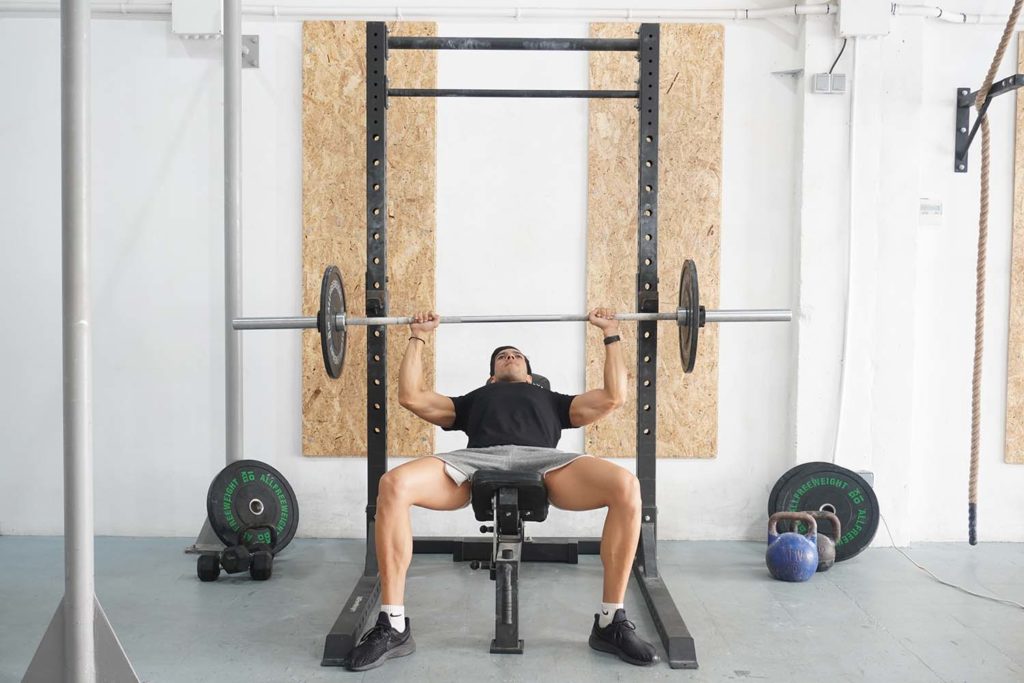
The most common variation is the barbell incline press. Many trainees switch between dumbbells and a barbell to keep their training fresh and engaging. Incline pressing a barbell can be tricky because most incline presses have you reach far back to unrack the weight. It might be beneficial to work with a spotter on this variation.
2. Neutral-Grip Incline Dumbbell Press
The neutral-grip incline dumbbell press is almost the same as the regular version. The primary difference is, your wrists point toward one another. The neutral-grip variation can be valuable for trainees who feel shoulder or wrist discomfort with the regular version.
3. Single-Arm Incline Dumbbell Press
Try the single-arm incline dumbbell press if you’re looking for a way to challenge yourself and strengthen your core even more. Holding onto a single dumbbell places significant tension on your abs, obliques, and glutes that work extra hard to keep you stable.
Mistakes to Avoid
A common mistake related to incline pressing is using too much weight. Many trainees reason that if they can flat press a certain amount, they should lift it on the incline press, too. But you should start with 70 to 80 percent of what you flat press and go from there. Using too much weight only cuts your range of motion short and puts you at risk of injury.
Another mistake to avoid with the dumbbell incline press is bouncing the weight off the bottom and taking advantage of the momentum. The goal is a smooth execution of each rep. Doing so will maintain tension on the right muscles, allowing you to build strength and mass.
You should also be careful not to over-arch your lower back while bench pressing. A rounded back can be harmful, but over-arching isn’t good, either. As you set up for the incline press, squeeze your shoulders blades together. Doing so will put your spine in an optimal position for the incline press.
The last mistake to avoid is flaring your elbows out too much. In doing so, you place your shoulders in a weaker and more compromised position while pressing. Instead, tuck them in more to keep them safe and maximize your power output.
Similar Exercises to the Dumbbell Incline Bench Press
Push Press
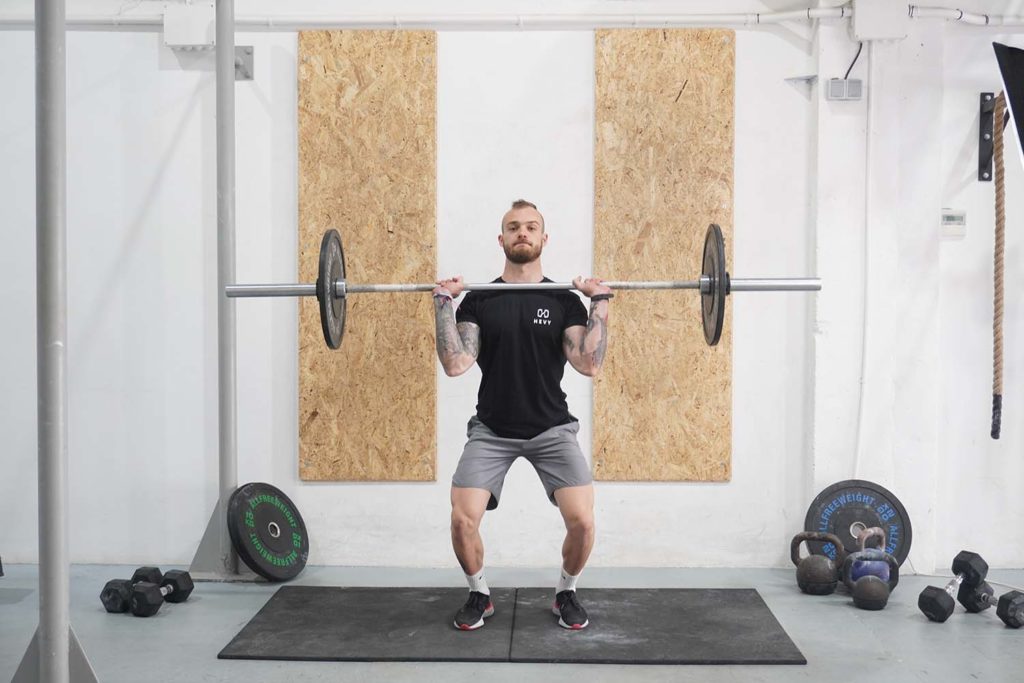
The push press is a whole-body dynamic exercise where you lift a barbell overhead with momentum and good technique. The movement primarily trains your shoulders and triceps, but it also works the upper chest. Similar to the dumbbell incline press, the pushing angle allows for better upper chest activation.
Incline Chest Fly (Dumbbell)
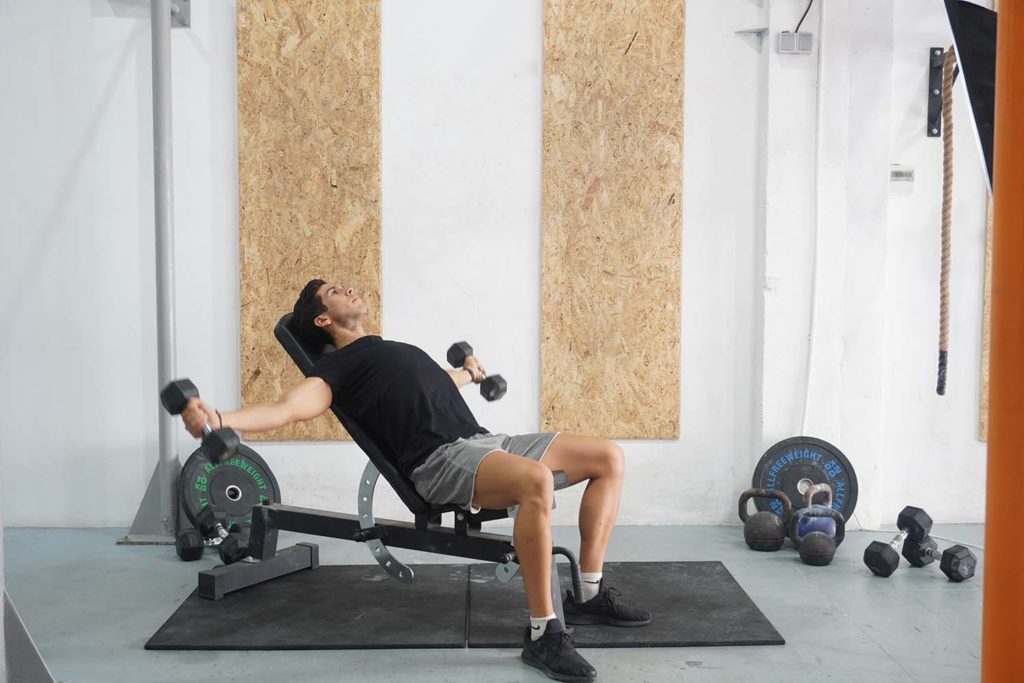
The incline chest fly is a great isolation movement for the chest. Thanks to the incline torso angle, this chest fly variation allows you to emphasize the clavicular portion of your chest, much like with the incline press. The primary difference is that the chest fly works your pecs with slightly less weight and places less emphasis on your triceps than the incline press.
Bench Press (Barbell)
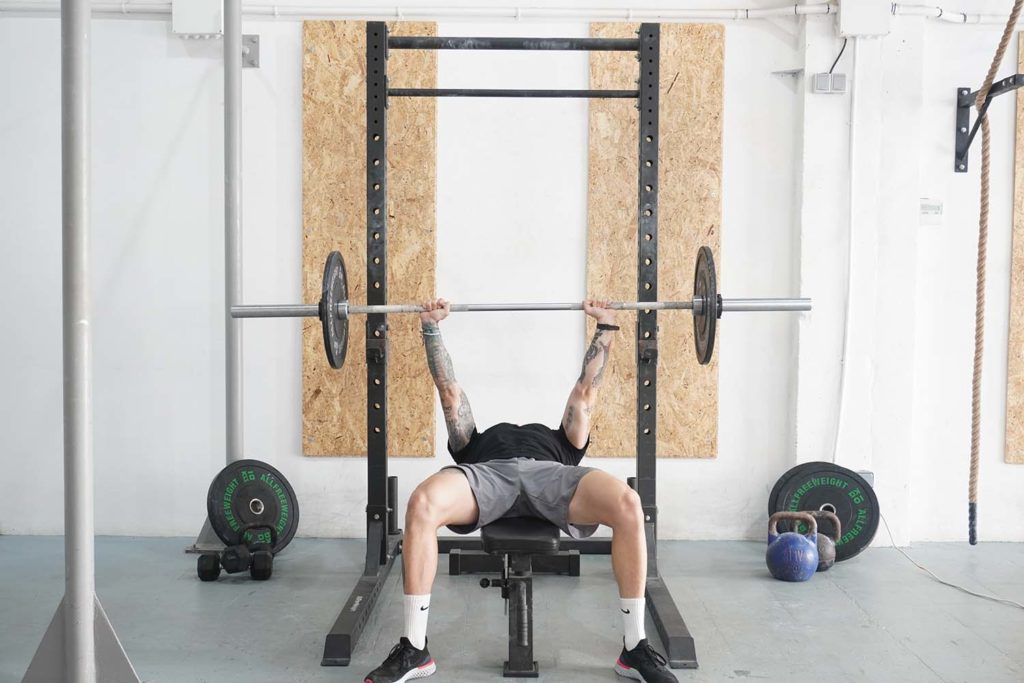
The flat barbell bench press is a classic chest exercise and a favorite of many gym-goers. The movement is similar to incline pressing because both activities feature a similar range of motion and train the same muscles. The primary difference comes from the torso angle. Pressing from a flat position allows you to emphasize your middle and lower chest better.
